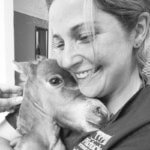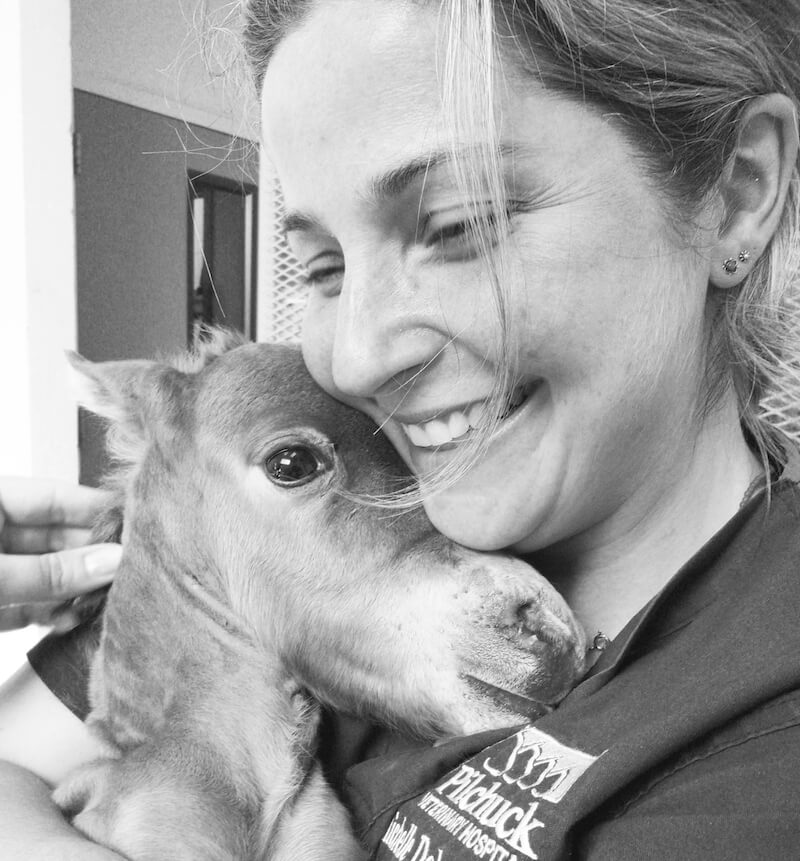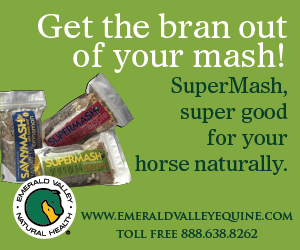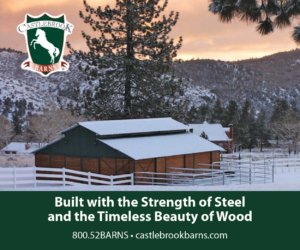From Prevention to Prognosis
by Michelle Delco, DVM, DACVS
Tendon and ligament injuries are common causes of equine lameness, responsible for up to 30 percent of lameness in athletic horses by some estimates. With the changing of the seasons, following is some timely information on preventing tendon and ligament injuries, especially in those horses that may have had a quiet winter.
An Anatomy Review
A ligament is a fibrous tissue that connects bone to bone; a tendon is a fibrous tissue that connects muscle to bone. Both are made of long, thin collagen fibers, organized in bundles of thousands, like a rope. The tissue is extremely strong but also somewhat stretchy, which allows ligaments and tendons to support the weight of the horse and to act as shock absorbers. Injury occurs when these tissues are overloaded – either due to an athletic injury (repetitive/additive strain), a single traumatic event or a combination of both.There are many different types of tendon-ligament injuries. Common ones include superficial digital flexor tendon (SDFT) – classic “bowed tendon;” suspensory ligament – “high suspensory” and suspensory branch injuries; collateral ligaments – almost every joint has collateral ligaments that lend side-to-side stability and common joints involved are the coffin, fetlock and stifle; deep digital flexor tendon (DDFT) –injuries can occur behind the cannon bone, at the pastern or low in the foot.
Diagnosing Tendon-Ligament Injuries
Some of these injuries are relative easy to spot (e.g., bowed tendon), as they have heat, swelling and sensitivity. However, a surprising number of soft-tissue injuries (especially ones within the hoof capsule) are tough to diagnose. They don’t show obvious heat or swelling, and the degree of lameness can be variable. For example, a common scenario with tendon-ligament injuries is that lameness improves with rest, but recurs and/or worsens with exercise. Therefore, pursuing a workup with a veterinarian who is experienced in lameness diagnosis is critical. This involves a thorough lameness evaluation, including an ultrasound, the imaging modality of choice to look at tendons and ligaments. Occasionally, radiographs and MRI also are used.
Prognosis
Tendon-ligament injuries are worrisome in terms of healing and return to use. Unlike muscle, tendons and ligaments take a long time to condition … and a long time to heal. The tissue is poorly endowed with blood vessels, and the body’s ability to remove damaged collagen and replace it with new, functional tissue is limited. Ligaments and tendons tend to heal with inelastic scar tissue which is unable to hold up to strain and stretch, setting the horse up for re-injury when going back to work.
Treatment
Call your horse’s veterinarian as soon as you suspect a problem. It is important to note that tendon-ligament injuries are not all created equally. A veterinarian must first make an accurate diagnosis to recommend the appropriate treatment. Acute injuries with heat and/or swelling are usually treated with rest, cold therapy, wrapping and anti-inflammatories.
Rest and Rehabilitation
During the rest and rehabilitation phase, the concept is to control the load/strain on the healing tissue, and to never overload it past what the body can repair. We work to gradually build strength and regain elasticity. In general, when the intent is to return the horse to athletic function, free turnout is contraindicated. One “run-buck-tear” around the pasture is all it takes to undo the healing that has happened. An acute injury turns into a chronic one, with cycles of partial healing and re-injury. “Locking up the horse and throwing away the key” can be just as harmful. The injury may heal, but as unorganized scar tissue. In this case, the horse will be at a high risk for re-injury when returned to work. The best route is a custom rehab plan determined by your horse’s veterinarian. This will take into account which ligament/tendon is injured, how badly, whether the injury is acute or chronic, current fitness and workload, and future expectations of the horse.
Advanced Therapies
Because of the challenges with healing tendon-ligament injuries, we also commonly recommend “advanced” therapies including shockwave therapy, platelet-rich plasma (PRP), bone marrow aspirate concentrate (BMAC) or stem cells. None are magic cures, nor do they replace a proper rehab program, but they can potentially accelerate the healing process. More importantly, these treatments may promote better-quality healing and therefore provide the best prognosis for long-term soundness.
Prevention
The top three preventive steps are: 1) conditioning, 2) conditioning and 3) conditioning! The horses at the highest risk of injury are those that are unfit, or have had a period of lay-off and are then suddenly worked hard. It is important to work with a good trainer or educate yourself on the best way to condition a horse for its intended use. General rules of thumb: Build layers of fitness gradually and consistently. Never work to the point of exhaustion/fatigue, as this is a time when tendon-ligament injury is most likely to occur. Only after the horse is fit should you gradually add discipline-specific rigors, such as collection in a dressage horse, speed and tight turns in a barrel horse or uneven terrain in a trail horse. Other preventive efforts include regularly palpating your horse’s legs before and after exercise to monitor for heat and swelling; regular farrier care to maintain good foot balance; warming up before and cooling down after strenuous exercise; and good footing during hard work whenever possible. Stop exercise immediately if your horse feels “off,” and call the veterinarian sooner rather than later.
Bottom Line
As with many other medical conditions, the best approach with tendon-ligament injuries is early recognition and treatment to prevent problems down the road. If we catch these injuries in the acute stage and then treat and rehab the horse properly, we have the best chance for good-quality healing, return to soundness and re-injury prevention.
 Dr. Delco is originally from New York, and received her veterinary degree from Cornell University in 2002. After a one-year post-doctoral internship at Rood and Riddle Equine Hospital in Lexington, Kentucky, she completed an equine surgery residency at the University of California, Davis and obtained board certification through the American College of Veterinary Surgeons. Dr. Delco then joined the faculty at Kansas State University as an assistant professor in equine surgery. Although she greatly enjoys teaching, Dr. Delco left academic practice to join Pilchuck Veterinary Hospital in July 2008, and is excited to live and work in the Northwest. Her professional interests include orthopedic surgery, sport horse lameness diagnosis and treatment and minimally invasive surgery. When not in the hospital, she spends her time gardening, singing and playing traditional American music and exploring the outdoors with her dog, Kirby. For more information or to schedule an appointment visit www.pilchuckvet.com.
Dr. Delco is originally from New York, and received her veterinary degree from Cornell University in 2002. After a one-year post-doctoral internship at Rood and Riddle Equine Hospital in Lexington, Kentucky, she completed an equine surgery residency at the University of California, Davis and obtained board certification through the American College of Veterinary Surgeons. Dr. Delco then joined the faculty at Kansas State University as an assistant professor in equine surgery. Although she greatly enjoys teaching, Dr. Delco left academic practice to join Pilchuck Veterinary Hospital in July 2008, and is excited to live and work in the Northwest. Her professional interests include orthopedic surgery, sport horse lameness diagnosis and treatment and minimally invasive surgery. When not in the hospital, she spends her time gardening, singing and playing traditional American music and exploring the outdoors with her dog, Kirby. For more information or to schedule an appointment visit www.pilchuckvet.com.
Published May 2012 Issue

The Northwest Horse Source is an independently owned and operated print and online magazine for horse owners and enthusiasts of all breeds and disciplines in the Pacific Northwest. Our contemporary editorial columns are predominantly written by experts in the region, covering the care, training, keeping and enjoyment of horses, with an eye to the specific concerns in our region.





